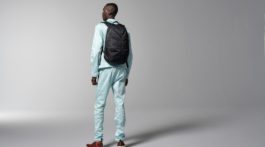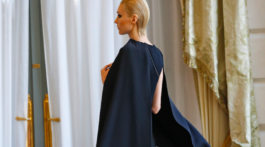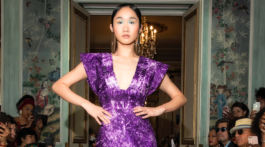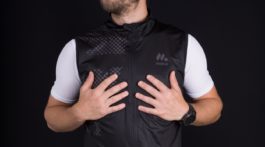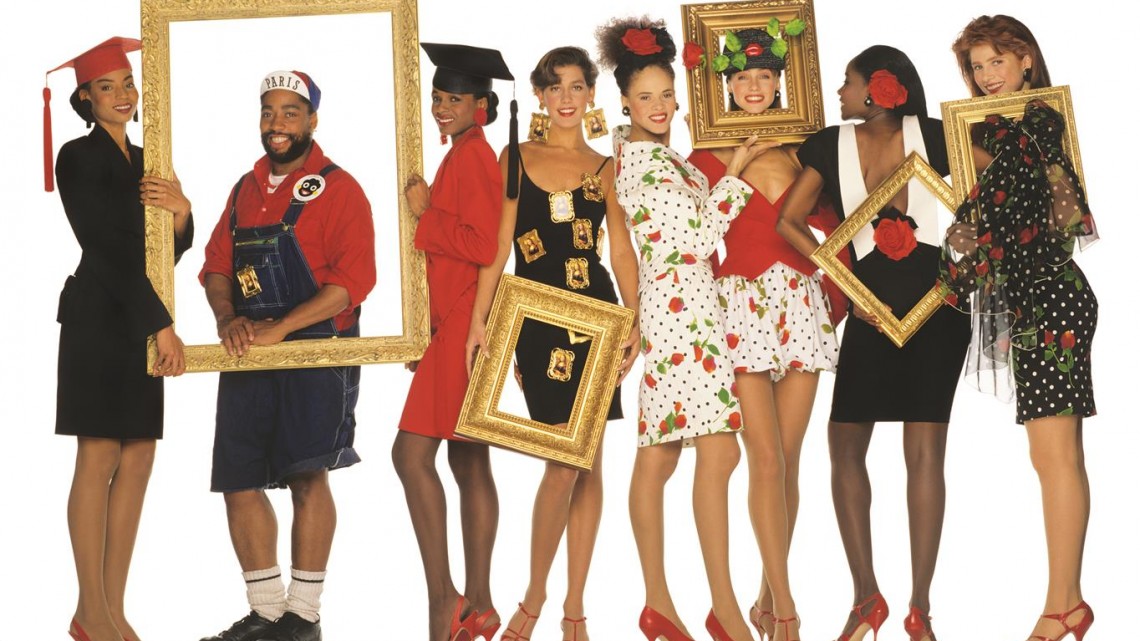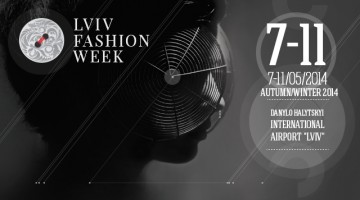PATRICK KELLY
Runway of Love
March 27, 2014
Philadelphia, USA – From April 27 to November 30, 2014 fashion celebrates at the Philadelphia Museum of Art in the retrospective Patrick Kelly: Runway of Love, which explores the meteoric rise and remarkable achievements of a 1980s legend whose clothing was worn by women of every age, from actress Bette Davis, late in her life, to singer Vanessa Williams, then in her twenties.This is the first exhibition to showcase the full scope of Kelly’s head-to-toe runway ensembles, and will include selections from the artist’s significant holdings of black memorabilia, videos of his exuberant fashion shows, and works by renowned photographers Horst P. Horst, Pierre et Gilles, and Oliviero Toscani.
Kelly’s bold and bright creations stood out on urban streets, nightclubs, and fashion runways, and his remarkable talent, exceptional charisma, and branding savvy catapulted him to success. His work had a broad popular appeal, yet it was also intellectually edgy, challenging racial and cultural boundaries. Kelly’s muses ranged from his Mississippi grandmother, to the American expatriate entertainer Josephine Baker, to the couturiers Madame Grès and Elsa Schiaparelli.
Dilys Blum, The Museum’s Jack M. and Annette Y. Friedland Senior Curator of Costume and Textiles and organizer of this exhibition, said, “Patrick Kelly’s bold colors, playful aesthetic, and voguing runway shows have inspired today’s designers such as Gerlan Marcel and Michael Bastian, who has drawn inspiration from Kelly’s incredible spirit and love of France in his Spring/Summer 2014 menswear collection. What Kelly achieved during the 1980s has continuing resonance today. While the many barriers he faced remain, Kelly was always positive. His branding and self-marketing were unique at the time, but now, in an age of fast fashion and brand-driven sales, it is a perfect time to reexamine Kelly’s contribution to fashion history.”
The exhibition is organized into six sections, beginning with Kelly’s 1983–84 collection for the Italian experimental design group Studio Invenzione and continuing through his final Fall/Winter 1989–90 collection. It opens with “Runway of Love,” highlighting the designer’s heart-shaped embellishments to his clothing, often composed from his signature buttons. As a child growing up in Mississippi, Kelly would often lose his buttons, which his grandmother replaced with those of many different colors, a look that Kelly later adapted for his fashion designs.
”Fast Fashion” includes designs that Kelly assembled quickly to sell on the streets of Paris after he moved there in 1979. He dressed his model friends in body-conscious knits, which they would wear around the city, becoming in effect living advertisements of his vision. These dresses quickly caught the attention of ELLE magazine, which featured Kelly’s fashions in a six-page spread in February 1985, as well as the Paris boutique Victoire. His first collection was purchased by Bergdorf Goodman, who found Kelly’s designs fun, chic, affordable, and Parisian, and the store showcased them in a window display reserved for new designers.
The American South, where Kelly was born and raised, informed and inspired his brand from the very beginning. He used the concept of women dressed up in their Sunday best as a point of departure for many of his looks. “Mississippi in Paris” features Kelly’s work that boldly addressed the designer’s upbringing, as well as racial tropes, from his insouciant Aunt Jemima bandana and golliwog dresses, the latter of which was adapted as his logo.
“Hot Couture” is a playful tribute to Kelly’s muses and to fashion history. Many of Kelly’s own presentations parodied fashion show traditions and riffed on the work of famed couturiers such as Coco Chanel, Elsa Schiaparelli, and Madame Grès, the designer whom Kelly admired most and held in highest regard. A master at draping and manipulating fabric into Greek goddess-like gowns, Madame Grès inspired Kelly’s much more practical body-conscious knitted jersey dresses with wraps that could be tied around the body in various ways.
In 1988, shortly after receiving financial backing from the fashion powerhouse Warnaco, Kelly became the first American and the first black designer to be elected into the elite Chambre Syndicale du Prêt-à-Porter des Couturiers et des Créateurs de Mode. Membership in this exclusive group allowed Kelly to present his ready-to-wear collections in the tents at the Musée du Louvre. The section titled “Lisa Loves the Louvre” features designs from this Spring/Summer 1989 collection, for which Kelly fantasized that the museum’s most famous resident, Mona Lisa, invited him to show his latest designs. His collection was a spirited evocation of all his favorite Lisas, from Billie (Holiday) Lisa to the other-worldly Moona Lisa.
The exhibition’s final section, “Two Loves” is a tribute to Kelly’s loves, America and France, which were also embraced by his muse Josephine Baker. The designs in this section are from Kelly’s final Fall/Winter 1989–90 collection, and pay homage to cultural icons from both countries, including the Eiffel Tower and the cartoon character Jessica Rabbit. The exhibition’s rousing finale is an allusion to the Casino de Paris music hall, where Baker performed during the 1920, and which Kelly transforms into the Casino de Patrick.
Patrick Kelly: Runway of Love will showcase over eighty ensembles recently presented to the Museum as a promised gift by Kelly’s business and life partner, Bjorn Guil Amelan, and Bill T. Jones. The exhibition will be accompanied by public programs this fall, including a fashion film series and a conversation about Patrick Kelly and his fashion designs and career with supermodel Pat Cleveland, writer Michael Gross, and fashion journalist Carol Mongo.
About the artist:
Patrick Kelly (c. 1954–1990) was born and raised in Vicksburg, Mississippi. His mother, a home economics teacher, taught him how to draw, and his grandmother, a cook, fostered a love of fashion by bringing him fashion magazines from the family for whom she worked. Kelly briefly studied art and history before moving to Paris in late 1979. In 1988, he became the first American and the first black designer to be voted into the Chambre Syndicale du Prêt-à-Porter des Couturiers et des Créateurs de Mode, the French fashion industry association and standards organization. Kelly’s career was cut short by AIDS in 1990. The epitaph on his headstone in Père Lachaise Cemetery, Paris, is emblematic of the designer and his legacy: “Nothing Is Impossible.”
Sponsorship:
The exhibition is supported in part by the Arlin and Neysa Adams Endowment. Additional funding is provided by Barbara B. and Theodore R. Aronson, Arthur M. Kaplan and R. Duane Perry, Nordstrom, and by members of Les Amis de Patrick Kelly, a group of generous supporters chaired by Bjorn Guil Amelan and Bill T. Jones.
Exhibition Hours:
Tuesday through Sunday: 10:00 a.m.–5:00 p.m.
Social Media:
Facebook: philamuseum; Twitter: philamuseum, #runwayoflove; Tumblr: philamuseum; YouTube: PhilaArtMuseum; Instagram: @philamuseum
The Philadelphia Museum of Art is among the largest museums in the United States, with a collection of more than 227,000 works of art and more than 200 galleries presenting painting, sculpture, works on paper, photography, decorative arts, textiles, and architectural settings from Asia, Europe, Latin America, and the United States. Its facilities include its landmark Main Building on the Benjamin Franklin Parkway, the Perelman Building, located nearby on Pennsylvania Avenue, the Rodin Museum on the 2200 block of the Benjamin Franklin Parkway, and two 18th-century houses in Fairmount Park, Mount Pleasant and Cedar Grove. The Museum offers a wide variety of activities for public audiences, including special exhibitions, programs for children and families, lectures, concerts and films.
For additional information, contact the Marketing and Communications Department of the Philadelphia Museum of Art at (215) 684-7860. The Philadelphia Museum of Art is located on the Benjamin Franklin Parkway at 26th Street. For general information, call (215) 763-8100, or visit the Museum’s website at www.philamuseum.org.
